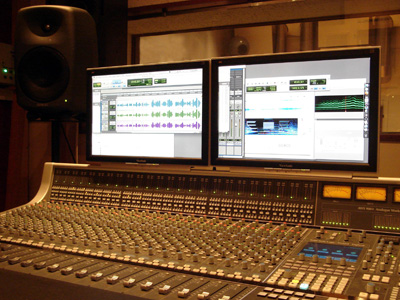by Jérôme Barthélemy
The GAMELAN project is devoted to the development of an environment for management and archival of digital audio and music (in French, Gamelan stands for "Gestion et Archivage de la Musique Et de L'Audio Numérique"). It will provide an intelligent archival system for music, based on the history and the semantics of the production.
The production of a music piece – either art music or pop music - using digital technology is a very complex process involving many people, an array of technologies and many different processes. It generally results in a very complex set of digital objects, and the organization of this set of files for the purpose of archiving and eventually republication or repurposing is not a straightforward task.
At this stage, it should be evident that it is not sufficient to archive the result of the production, the "master". In reference to Acousmatic music, composer Daniel Teruggi states that "It may seem that the essential issue for an Acousmatic work is to be preserved as such; in the same way a traditional instrumental score seems to convey the necessary information for music performance (which it does not, it conveys partial information, the missing information is reconstructed through use tradition). However, the situation is much more complex due to the characteristics of the production environment, which interfere with the nature of the result and the number of possible elements to be preserved."

Gamelan takes care of the future of digitally encoded music.
The new uses facilitated by digital technologies make it possible to envisage new productions - what is known as "repurposing", even in the domain of popular music, such as the creation of a version for karaoke. For art music, other forms of repurposing, such as musicological studies, have to be anticipated. This is true too, for popular music, in which (as pointed out by Marc Danger from EMI), "a lot of fans would hear the ninety-one mixes for 'Billie Jean' and understand why Jackson and audio engineer Bruce Swedien chose to go with the second mix". The general absence of semantic qualifiers on the objects produced makes these studies and new productions almost impossible to realize.
This is where GAMELAN intends to develop a new approach, by developing an environment that will track the activities of users during the production process - including the activity done in end-users’ tools like sequencers - audio imports and exports, mixing and applying effects.
By recording the main events, the environment will be able to track the activities. But this is evidently insufficient for applying semantic qualifiers to digital objects and for detecting the relationships between the different objects of the audio production (original recordings, modifications, results of mixes, etc.). For this purpose, we need to develop a language for the description and representation of musical production processes, as well as for the musical object itself. The definition of this language is at the very core of the GAMELAN project, and is the subject of a PhD thesis (advisors Bruno Bachimont, UTC, and Alain Bonardi, IRCAM).
The main difficulty in developing this language is to define the right level of abstraction. As explained by Bruno Bachimont: "We are looking for a level of representation that enables to hold [sic] the content invariants without being burdened by the incidental aspects of its technical implementation. This issue is very close to the so-called ‘Knowledge Level’ in knowledge engineering, where this level would get the treatment imposed to representations, being more general than the code implementing this treatment, but precise and prescriptive enough to reproduce that treatment. The purpose is finally to mark out the variety of processes involved and to find out the invariants, enabling on the one hand to drive a musical production, and on the other hand to manage musical contents as results of a production."
At the current stage, the project has developed a first prototype of the environment that is able to track some of the activities coming from end-user applications, record these events, and apply some very simple semantic rules to the set of events in order to define new relationships. The prototype is, at this stage, able to determine the audio sources of a mix and to present that relationship in a graphical interface to the end user. In parallel, studies have been done in order to define the bases for the future language for musical production. The next step will be to enter into an iterative process to refine the language and the environment.
The expected outcomes of the project are the development of a language for musical production and of an environment that is able to track events and build an intelligent, semantically qualified archive.
GAMELAN started in November 2009 and is scheduled to end in February 2013. The project is partially supported by the French ANR (National Agency for Research). It involves four partners: IRCAM (Institut de Recherche et de Coordination Acoustique/Musique), INA (Institut National de l'Audiovisuel), UTC (Université de Technologie de Compiègne), and EMI Music France.
Link:
http://www.gamelan-projet.fr
Please contact:
Jérôme Barthélemy, IRCAM, France
Tel: +33 1 44 78 15 53
E-mail:










